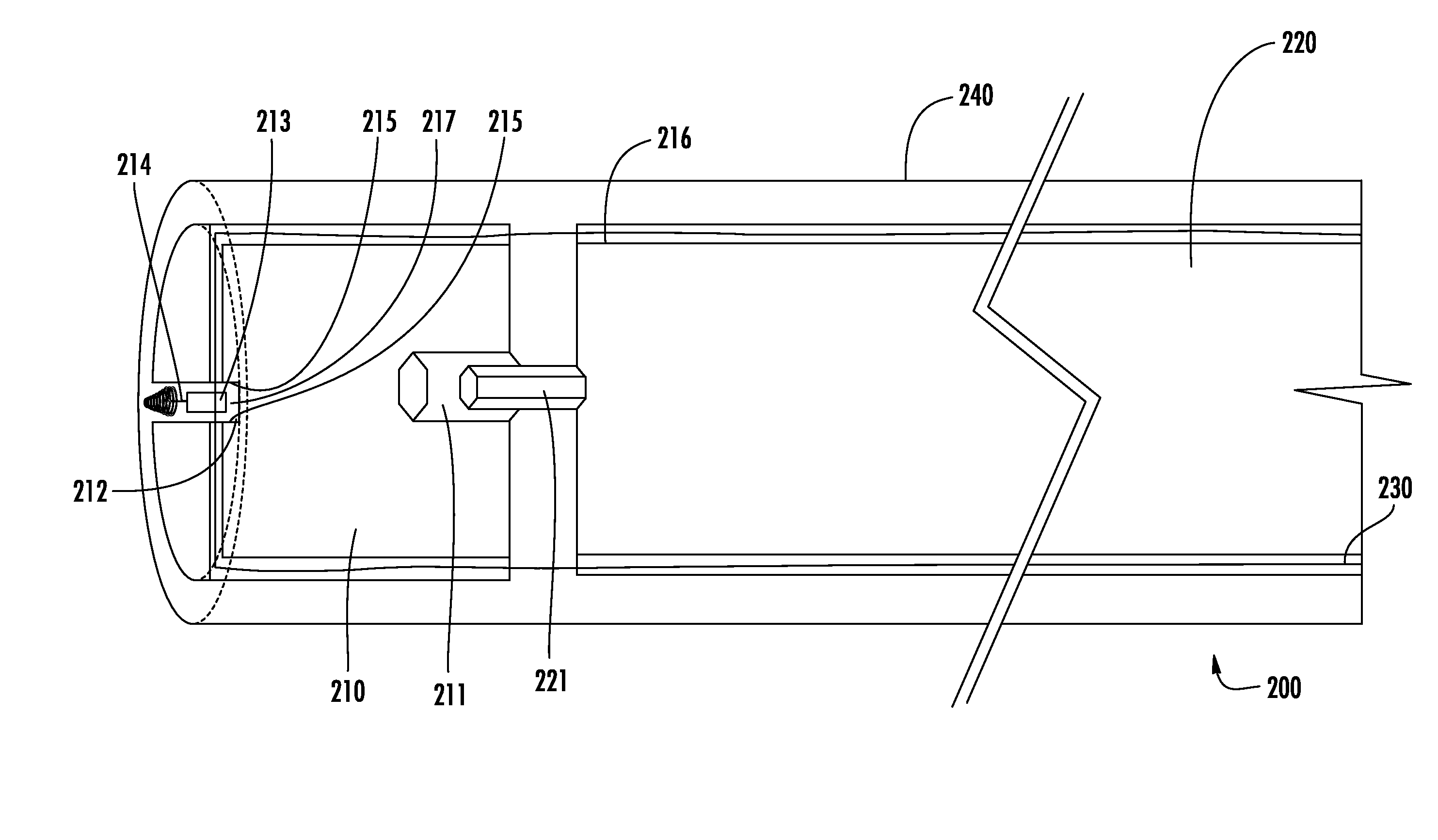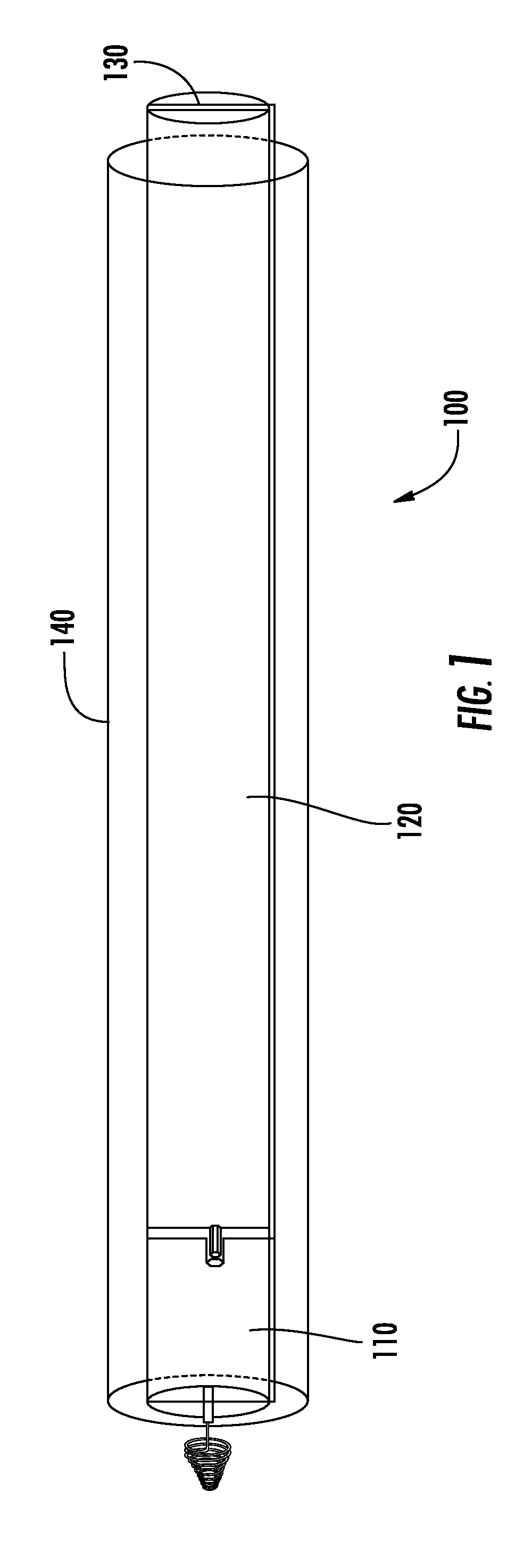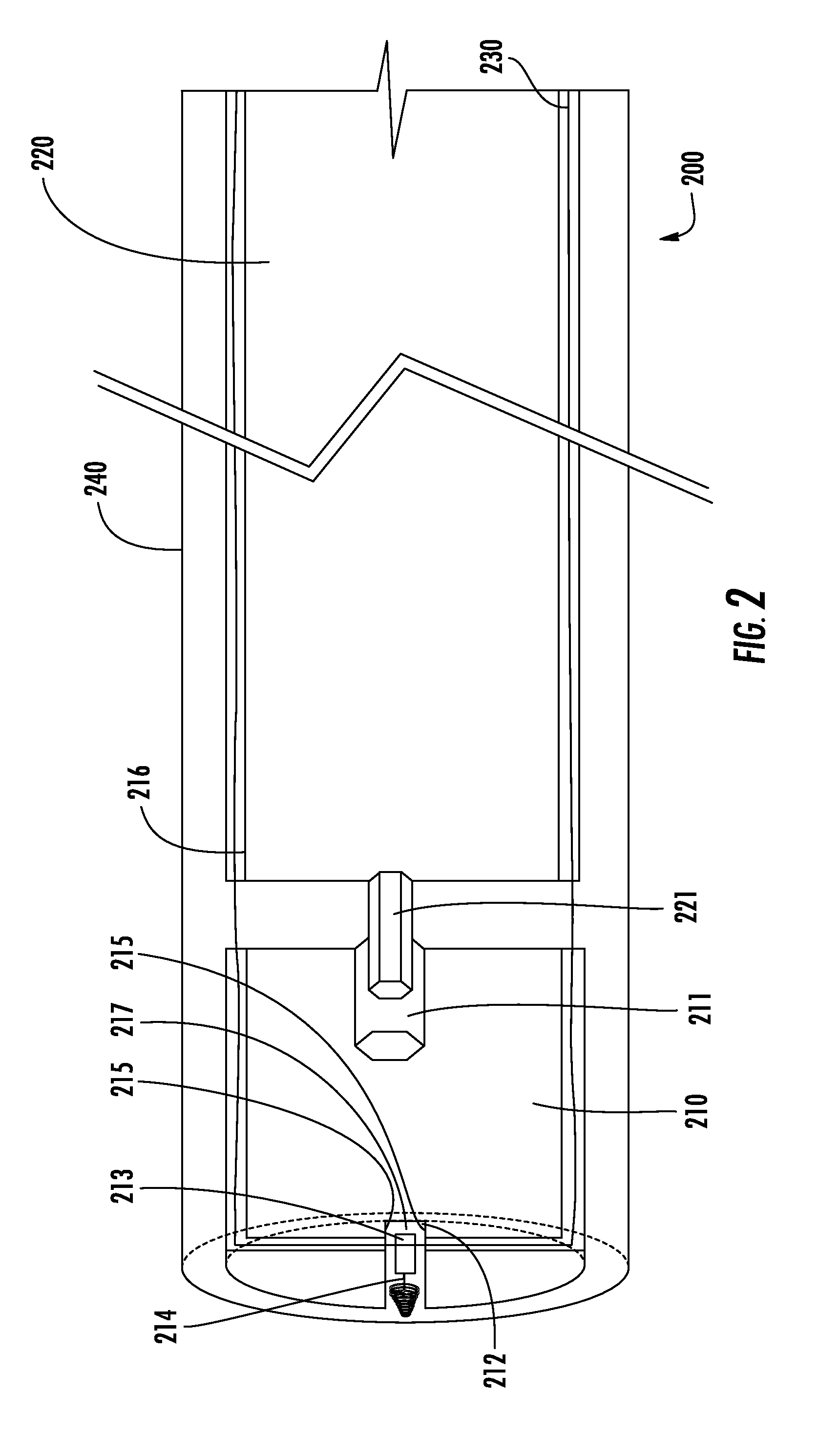Intrathoracic pacemaker
a pacemaker and intracranial technology, applied in the field of medicine and medical devices, can solve the problems of dislodging the electrode from the design and use of fetal pacemakers have not been successful, and the electrode is still in the fetal heart tissue, so as to achieve minimally invasive and artificial heart pacing
- Summary
- Abstract
- Description
- Claims
- Application Information
AI Technical Summary
Benefits of technology
Problems solved by technology
Method used
Image
Examples
Embodiment Construction
[0018]Reference will now be made in detail to various exemplary embodiments of the invention, examples of which are illustrated in the accompanying drawings. It is to be understood that the following detailed description is provided to give the reader a better understanding of certain details and features of embodiments of the invention, and that the following description is not to be understood as a limitation on the scope of the invention.
[0019]One general aspect of the invention is a fully-implantable cardiac pacemaker. In the exemplary embodiment discussed now, the pacemaker relates to a fetal pacemaker, with the understanding that the concepts, materials, and techniques are equally applicable to patients after birth. The pacemaker of this exemplary embodiment of the invention comprises at least one electrode for delivering an electric pulse to fetal cardiac tissue. The electrode can be fabricated from any suitable material or combination of materials that are electrically condu...
PUM
 Login to View More
Login to View More Abstract
Description
Claims
Application Information
 Login to View More
Login to View More - R&D
- Intellectual Property
- Life Sciences
- Materials
- Tech Scout
- Unparalleled Data Quality
- Higher Quality Content
- 60% Fewer Hallucinations
Browse by: Latest US Patents, China's latest patents, Technical Efficacy Thesaurus, Application Domain, Technology Topic, Popular Technical Reports.
© 2025 PatSnap. All rights reserved.Legal|Privacy policy|Modern Slavery Act Transparency Statement|Sitemap|About US| Contact US: help@patsnap.com



